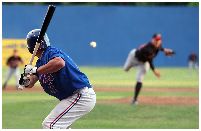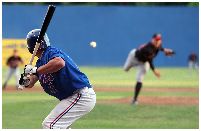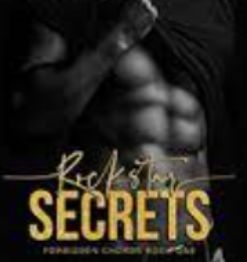Ben Strack & Wes Sime – Mental Conditioning for Intense Focus in Baseball
$97.00 Original price was: $97.00.$28.50Current price is: $28.50.
Dr. Sime has worked with both professional golfers and pro baseball players and believes that mental training for peak performance is as important as physical training.
File size: 188.46 MB
Ben Strack & Wes Sime – Mental Conditioning for Intense Focus in Baseball
Recently I sat down with Dr. Wes Sime to ask him a few questions about an upcoming webinar “Mental Conditioning for Intense Focus in Baseball” that he will be presenting with Dr. Ben Strack. Drs. Strack and Sime have been involved in baseball for decades and they are part of a high performance training team supporting numerous elite Olympic, professional and collegiate sports teams. They are currently working with the Biofeedback Federation CIC to develop software applications for baseball.
Just prior to the interview, I read an article on the website about golfer Charlie Beljan’s panic attack on the PGA Tour and his subsequent win. It’s a pretty remarkable story and one that I am surprised doesn’t happen more often in both professional and amateur sports. Here’s an excerpt from the article with comments from golf instructor Jim McLean:
McLean, who is ranked among Golf Digest’s top five teachers nationally, said he saw panic attacks on the golf course from pros and recreational golfers alike more often than people would imagine. If it is a rare sight on the PGA Tour, he said, it is because being calm under pressure is part of the Darwinian weeding-out process in professional golf.
“Anxiety under pressure has driven a lot of golfers out of the game,” McLean said. “They’re people you don’t know of and never heard about because they couldn’t handle it. That includes some very talented guys. It’s part of the game that is underestimated and just as important as hitting the ball. It can be pretty scary, and it’s an incredible story that Charlie won.”
Dr. Sime has worked with both professional golfers and pro baseball players and believes that mental training for peak performance is as important as physical training. His training sessions are tailored to the individual athlete and include the use of biofeedback and neurofeedback. According to Dr. Sime, “Sport pychophysiology and biofeedback provide the “mind gym” training needed to shape the mental and emotional state of the player to deal with pressure and to thrive under difficult conditions.”
The use of peak performance training with biofeedback has steadily increased over the years but is virtually unknown to many. So how does it work? Simply put, biofeedback is like a window into the self. A good example is stress – we all know what it feels like to be stressed, but imagine that we are actually able to “see” what is going on in our bodies when we are anxious or stressed. Typically, our respiration rate increases, our hands may become sweaty and certain muscles may become tense. Now, imagine that we can alter our response to stress. That is biofeedback.
Below Dr. Sime answers a few questions about using bio and neurofeedback as part of his training program:
Why is peak performance training important to baseball?
The 2012 World Series revealed more than ever that teams with the largest payrolls, the best hitters and the most talented pitchers do not always produce dominant results. The game of baseball is more than raw physical power and technique. Not surprisingly, getting results comes down to the individual player’s and team’s ability to overcome adversity, anxiety and to maintain confidence without recent hits and runs to build high expectations. Physical strength and conditioning make an important contribution to the game, but the mental conditioning for intense focus, together with calmness and composure to optimize reaction time is equally important.
What does a typical training session involve?
I begin by assessing the individual needs of the player. It usually starts with “I’ve got to get better at hitting” or “I really want to get around on the ball faster,” or “I want to be less nervous and more confident in the batter’s box.” We’re really problem solving and we have this sophisticated technology that allows the player to look under the hood and see along with us what’s going on so we can all share in the solution.
Get immediately download Haled Ben Strack & Wes Sime – Mental Conditioning for Intense Focus in Baseball
What signals do you monitor?
In the beginning, it is important to capture the athlete’s attention and get them interested in doing this with very simple, straight forward illustrations. I usually start with monitoring respiration and heart rate variability or the combination of skin conductance and skin temperature so they can see when they’re stressed or when they’re in coherence. Then, I want them to be facing a simulated challenge while monitoring coherence and we have this technology in the BFE ProBaseball suite which is called is ReactTrak.
ReactTrak is a simple game that requires the player to keep a ball within a specific field of play using the mouse on the computer. The player needs to stay focused and very intent on tracking the ball on screen just like tracking the baseball out of the pitcher’s hand. We want the biofeedback to be accounting for and helping us condition toward better performance on the next trial so we can explain why the player lost that previous event on the ReactTrak. For example, the player may discover that he was getting too uptight or his breathing was messed up or whatever. So to answer your question on what signals are used, respiration and heart rate to begin with, then skin conductance and temperature, followed by muscle tension and at the most sophisticated level, the brainwaves become important.
How does that translate to hitting?
The goal in baseball hitting is to locate the ball coming out of the pitchers hand at lightning speed and tracking that ball whether it’s going straight or it’s breaking to one direction or another. The additional challenge is to bring the bat around with sufficient force and with perfect timing to meet the ball squarely. This complex motor learning task requires exquisite eye/hand and body coordination to bring the bat around at the right moment in time and on the same plane as the ball is crossing the plate. It’s all about hand and eye coordination and that’s what the ReactTrak game teaches. The benefit of using the game is that the player learns to do it all in a relaxed and focused state.
How do the players react to the training?
Part of the challenge in implementing program is presenting the relevance of the training in such a compelling manner that players and the coaching staff get on board. If they aren’t familiar with biofeedback, they may perceive it as too complicated, too “wired up” and might feel that it’s a little out of their control. However, when we get access to players, one-on-one, really wanting to get better at this game, then the instrumented, sensor and game driven training in the office comes together very well.
This type of training is just another tool in the arsenal. If you think about it, 30-40 years ago — no one in any sport did any weightlifting or training and conditioning…they just did their sport. And of course now – strength and conditioning, the weight room is just so sophisticated and they’ve got full time people aligned as personal trainers making sure that the work is done properly. Going forward, I think it’s going to be the same with regard to mental training. We have to be prepared to use the latest technology and we have to be the interface between the athlete and the equipment thus demonstrating how and work it works in preparation for The Game.
Get immediately download Haled Ben Strack & Wes Sime – Mental Conditioning for Intense Focus in Baseball
What advice do you have for biofeedback professionals interested in entering this field?
If you’re a biofeedback person, in your community, go find a sport psychologist. If you’re a sport psychologist, and you don’t know biofeedback, go find a biofeedback person in your community and collaborate together. You need to partner up with somebody where you can help each other.
………………………………………………………………..
If you’re a trainer, coach, sports agent or a biofeedback professional interested in learning more about Dr. Sime’s techniques, we invite you to attend an upcoming webinar where he and colleague Dr. Ben Strack will discuss mental conditioning for baseball.
Date: January 18, 2013
Time: 11:00 AM – 12:00 PM (Eastern Time, US & Canada)
Presented by: Dr. Wes Sime and Dr. Ben Strack
For further information, contact the BFE ProBaseball team at blueprobaseball@gmail.com.
………………………………………………………………..
Dr. Ben Strack, Ph.D.
Dr. Ben Strack is a licensed psychologist and a certified sport psychology consultant (CC-AASP). He is an adjunct faculty member at Argosy University where he teaches sport psychology classes. In his clinical/sports practice (Newport Beach & Santa Ana, CA) he consults with professional athletes (MLB, NHL), Olympic athletes (USA Women’s Indoor Volleyball; Swimming), college, and youth athletes.
Dr. Strack is author/editor of the sport psychology book “Applications of biofeedback and neurofeedback in sport psychology” (2011). He is a former division I college baseball player and founding partner of private baseball academy. During the 1999 and 2000 MLB seasons, he was the batting practice pitcher for the Anaheim Angels. From 1999 to 2004, he was hand-picked to pitch in the MLB Players’ Association and ESPN’s Big League Challenge Home Run Contests where he was the personal pitcher for Barry Bonds, Alex Rodriguez, Raphael Palmeiro, Jose Canseco, Shawn Green, Magglio Ordonez, Andruw Jones, and Troy Glaus.
Dr. Strack is a United States Olympic Committee (USOC) Sport Psychology Registry Member, board member of the Orange County Psychological Association and a co-chairperson for the Optimal Performance/Functioning division of the Association of Applied Psychophysiology and Biofeedback. He is also an active member of the American Psychological Association (APA) and the Association for Applied Sport Psychology (AASP).
Wes Sime, Ph.D., MPH, BCB, BCN
A pioneer in the field of Applied Sport Psychophysiology, Dr. Sime has helped to develop the technology to measure the over effort and “muscling up tension” that occurs in the batters box while baseball players face tough pitching. A former Sport Psychologist for the Omaha Royals AAA team, Wes has worked with major league players as well as several Olympic Teams. He has worked with PGA golfers including Payne Stewart, Corey Pavin, Troy Matteson and numerous others striving to help make sport psychology come to life in professional golf. Currently, Wes is a health psychologist and sport psychologist at First Step Wellness in Lincoln, Nebraska. He is the originator of the ProGolf concept and has worked Jane Arave in developing the ProGolf Suite for BFE.
Be the first to review “Ben Strack & Wes Sime – Mental Conditioning for Intense Focus in Baseball” Cancel reply
Related products
Other Courses
Other Courses
Other Courses
Other Courses
Other Courses





![Penina Petersen – Freezer Meals 1: $1.50 Dinners – Starter [eBook & Video Guides]](https://graspcourse.net/wp-content/uploads/2022/02/Penina-Petersen-–-Freezer-Meals-1-1.50-Dinners-–-Starter-eBook-Video-Guides-300x171.png)
![Penina Petersen – Freezer Meals 2: $1.50 Dinners – Veg Extras [eBook & Video Guides]](https://graspcourse.net/wp-content/uploads/2022/02/Penina-Petersen-–-Freezer-Meals-2-1.50-Dinners-–-Veg-Extras-eBook-Video-Guides-300x206.png)






Reviews
There are no reviews yet.